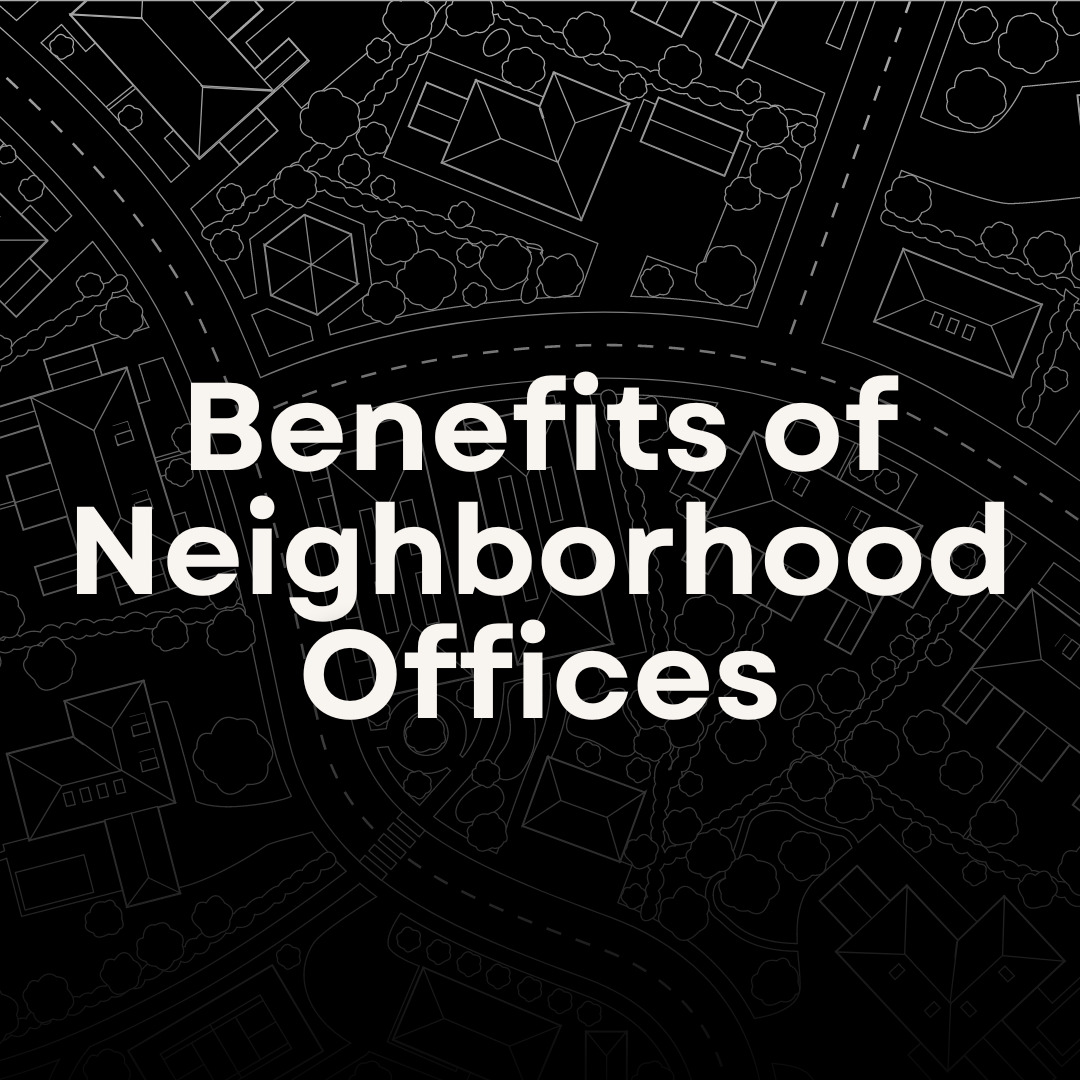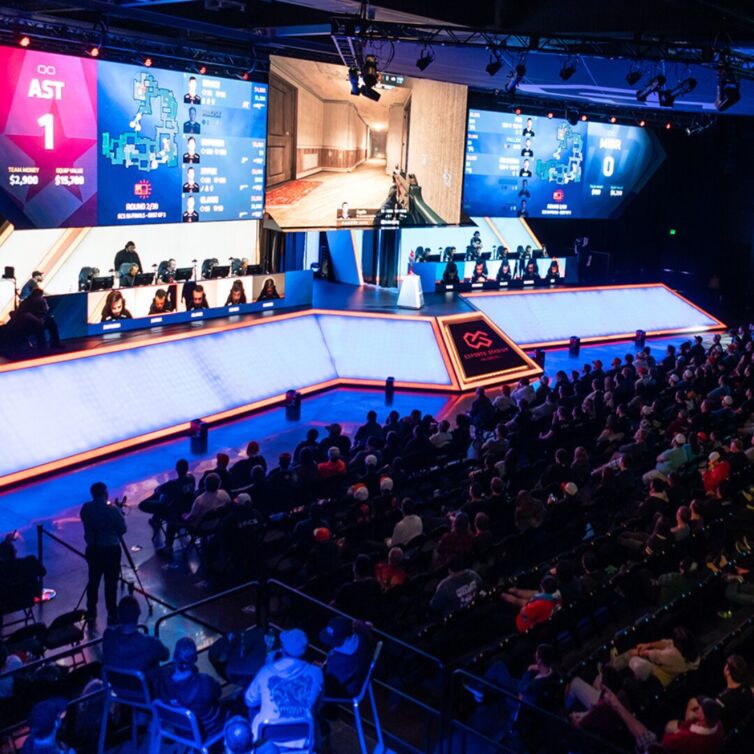From Cubicles to Communities: The Neighborhood Office Revolution
Improving the in-office Experience | February 5, 2024
In today’s fast-paced world, the pursuit of efficiency extends beyond our daily lives and into the spaces where we work.
Fostering human connection through thoughtful design has become increasingly vital. As we navigate the ever-growing emphasis on workplace efficiency, it’s essential to reevaluate traditional office layouts.
The idea of creating user-friendly office environments that mimic the communal spirit found in neighborhoods is often overlooked.
Finding a balance between the human experience and the demands of technology and logistics is the key.
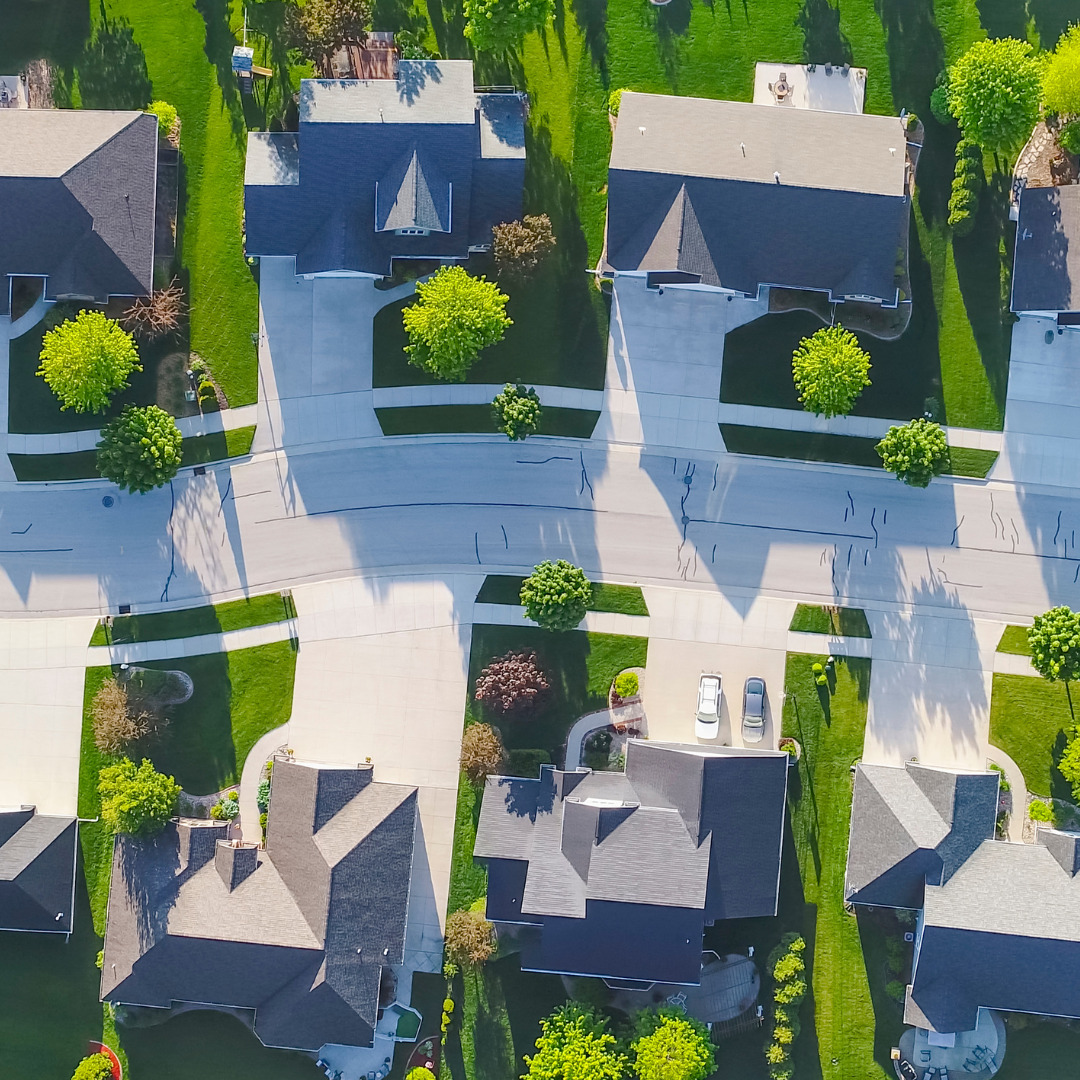
While offices and neighborhoods may seem like contrasting concepts, the rise of neighborhood offices has gained momentum among forward-thinking companies and building owners. This shift signifies a departure from the conventional, marking a new era where collaborative spaces take center stage.
A Balancing Act
Neighborhood offices seamlessly integrate the best elements of traditional and flexible office setups.
Traditionally, offices have adhered to the cubicle design, confining individuals to private boxes that create physical barriers among employees.
This setup can lead to feelings of isolation, negatively impacting the company overall. Embracing flexible office layouts removes these barriers and introduces an open, collaborative environment.
Despite initial concerns related to noise control and privacy, various open layout options cater to diverse employee needs. This allows for tailored and efficient use of office space.
What Are Neighborhood Offices
Neighborhood offices are meticulously crafted to fulfill the comprehensive needs of businesses and their employees.
Within these innovative spaces, provisions are made for collaborative work, individual desks, and team-based areas.
The versatility of office neighborhoods is exemplified through various layout options, including team-specific arrangements, activity-based designs, and open seating configurations.
Finding a balance between the human experience and the demands of technology and logistics is the key.
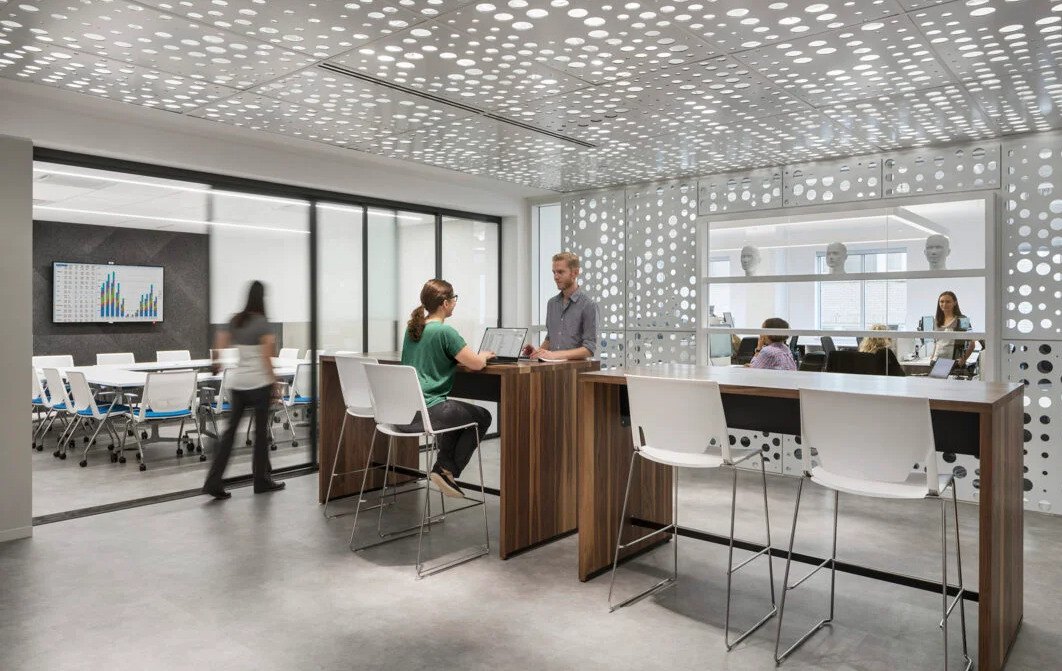
Team-specific layouts strategically group employees from the same departments, facilitating efficient collaboration in project work.
Activity-based layouts prioritize work types over job roles, offering designated areas for focused individual tasks and collaborative spaces for group endeavors.
In contrast to traditional offices, open seating layouts empower employees to choose their seating preferences daily, fostering a fluid and personalized workspace experience.
Crafting a neighborhood office is far from a one-size-fits-all task; it offers a spectrum of options. The answer lies in proactively implementing changes and attentively listening to employee feedback.
By blending various layout types, the perfect neighborhood office can be created to meet the unique needs and preferences of the workforce.
How to Execute Neighborhood Offices
Unlocking the potential of neighborhood offices requires a strategic approach. Begin by conducting thorough research, tapping into valuable employee feedback, and leveraging relevant data to inform your decisions.
This foundation is crucial for establishing a successful and efficient neighborhood office that aligns with the needs and preferences of your workforce. When it comes to desk arrangements, consider the options of hot desking and desk hoteling.
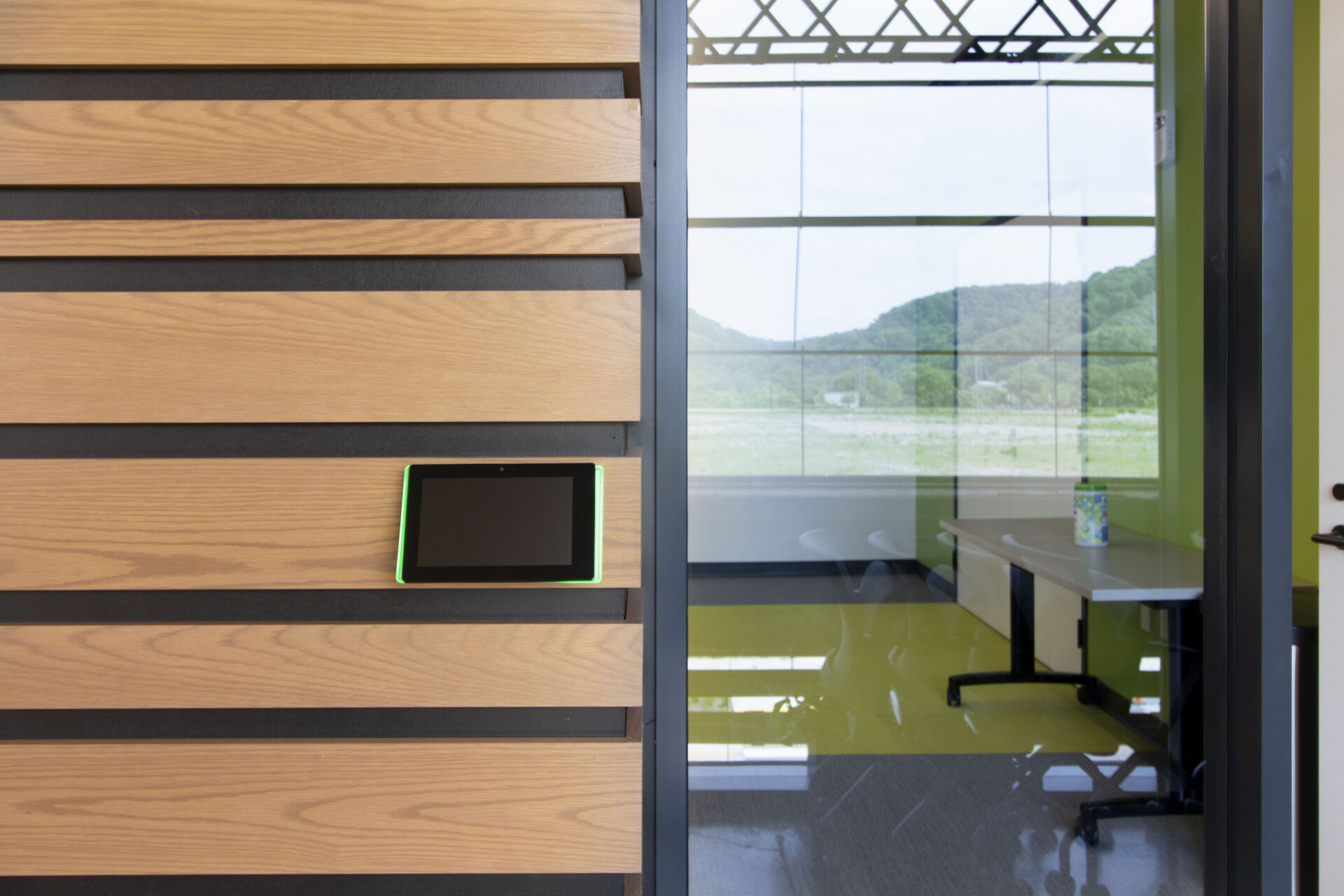
Hot desking operates on a first-come, first-serve basis, allowing employees to choose their desks upon arrival. On the other hand, desk hoteling involves a more structured approach, where employees can ‘book’ their desks in advance.
This planning flexibility offers a valuable edge over hot desking, providing employees with the time and certainty to strategize their workspace usage.
Opting for desk booking adds a layer of flexibility and also alleviates the stress and anxiety associated with uncertainty about seating arrangements.
By embracing this approach, the fast-paced twists and turns of life become more manageable, contributing to a smoother and more adaptive office experience.
Technology That Powers Neighborhood Offices
Utilize advanced seating arrangement software that empowers employees to reserve specific seating areas, whether for individual focus or collaborative endeavors.
Data serves as a valuable tool for evaluating what succeeds, identifying areas that fall short, and determining effective remedies for any shortcomings.
While proximity for team members is crucial, it’s equally imperative to have spaces where colleagues from different departments can easily collaborate.
Acknowledging the fluctuating nature of work, the seating arrangement should adapt to the ever-changing demands and projects.
Workplace efficiency is enhanced with digital signage through the integration of icons communicating the occupancy status of rooms or desks.
This signage serves as a visual indicator of the type of work underway in each area, providing employees with valuable insights.
By eliminating the need to inquire about room availability or risk interrupting ongoing sessions, this approach simplifies the process and allows employees to simply identify utilized and vacant areas.
Technology essential for seamless interactions and utilization includes computers, printers, video conferencing cameras, messenger platforms, phones, headsets, microphones, monitors, and more.
Integrating this technology enhances the efficiency of a neighborhood office.
The modern workplace office setup needs reimagined, giving rise to the concept of neighborhood offices.
While it’s conceivable to have a neighborhood office without technological aids, their inclusion significantly amplifies the overall experience for both employees and building owners.
Overall, the modern workplace demands a reimagining of traditional office setups, giving rise to the concept of neighborhood offices.
This paradigm shift, fueled by the pursuit of efficiency and the need for adaptable workspaces, has gained momentum among forward-thinking companies and building owners.
The integration of traditional and flexible office elements, coupled with user-friendly layouts and advanced technologies, has proven instrumental in promoting collaboration, enhancing comfort, and empowering autonomy.
The neighborhood office, a versatile and adaptive environment, meets the diverse needs of today’s workforce while also addressing the challenges posed by the dynamic nature of work in our high-speed world.
As we navigate the landscape of work, neighborhood offices emerge as a beacon of innovation, marking a departure from the conventional, focusing on the human experience and technological advancements to redefine the workplace.
For more on workplace design check out our insight on Professor & Student Collaboration Spaces.


